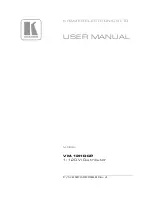
45
Introduction and Maintenance Intervals
Periodic inspections and maintenance are essential to obtain
safe and reliable operation of the switchgear. When Type GM
switchgear is operated under “Usual Service Conditions”,
maintenance and lubrication is recommended at five year
intervals. “Usual” and “Unusual” service conditions for
Medium Voltage Metal-Clad Switchgear are defined in ANSI
C37.20.2, clauses 3 and 7.1. Generally, “usual service conditions”
are defined as an environment in which the equipment is not
exposed to excessive dust, acid fumes, damaging chemicals,
salt air, rapid or frequent changes in temperature, vibration,
high humidity, and extremes of temperature.
The definition of “usual service conditions” is subject to a variety
of interpretations. Because of this, you are best served by
adjusting maintenance and lubrication intervals based on your
experience with the equipment in the actual service environment.
Regardless of the length of the maintenance and lubrication
interval, Siemens recommends that circuit breakers should be
inspected and exercised annually.
For the safety of maintenance personnel as well as others who
might be exposed to hazards associated with maintenance
activities, the safety related work practices of NFPA 70E, parts
II and III, should always be followed when working on electrical
equipment. Maintenance personnel should be trained in the
safety practices, procedures and requirements that pertain to
their respective job assignments. This manual should be
reviewed and retained in a location readily accessible for
reference during maintenance of this equipment.
The user must establish a periodic maintenance program to
ensure trouble-free and safe operation. The frequency of
inspection, periodic cleaning, and preventive maintenance
schedule will depend upon the operation conditions. NFPA
Publication 70B, “Electrical Equipment Maintenance” may be
used as a guide to establish such a program.
A preventive
maintenance program is not intended to cover recondi-
tioning or major repair, but should be designed to reveal, if
possible, the need for such actions in time to prevent
malfunctions during operation.
Switchgear assemblies are enclosed on all sides and top with
sheet metal. Access into the enclosure is provided by doors or
removable covers. Although the bus and connections are
insulated in metal-clad switchgear assemblies, it is a coordinated
insulation system; insulation plus air or creep distance equals a
given insulation level.
See ANSI C37.20.2, clause 6.2.3, which reads as follows:
This insulating covering is a requirement of metal-clad
switchgear and is provided to minimize the possibility of
communicating faults and to prevent development of bus
faults that would result if foreign objects momentarily
contacted bare bus. This insulating covering is usually only
a part of the primary insulation system and in such cases
the outer surface of this insulating covering will not be at
ground potential. It should not be assumed, therefore, that
personnel can contact this insulating covering with com-
plete safety.
Recommended Hand Tools
Type GM switchgear and type GMI circuit breakers use both
standard American and metric fasteners. American fasteners
are used in most locations in the switchgear cubicles.
Recommended Maintenance and Lubrication
Periodic maintenance and lubrication should include all the
tasks shown in
Table 6
.
Maintenance
H a z a r d o u s v o l t a g e s a n d h i g h - s p e e d
moving parts.
Will cause death, personal injury, and
property damage.
Do not work on energized equipment. Always
de-energize and ground the equipment before
working on the equipment.
DANGER
Hazardous voltages.
Will cause death, severe personal injury,
and property damage.
Do not contact energized conductors. Before
working on or near high voltage conductors
within switchgear, be sure they are de-ener-
gized and properly grounded.
DANGER
Failure to maintain the equipment could result in death, serious
injury or product failure, and can prevent successful functioning
of connected apparatus.
The instructions contained herein should be carefully reviewed, under-
stood, and followed.
The maintenance tasks in
Table 6
must be performed regularly.
WARNING






































